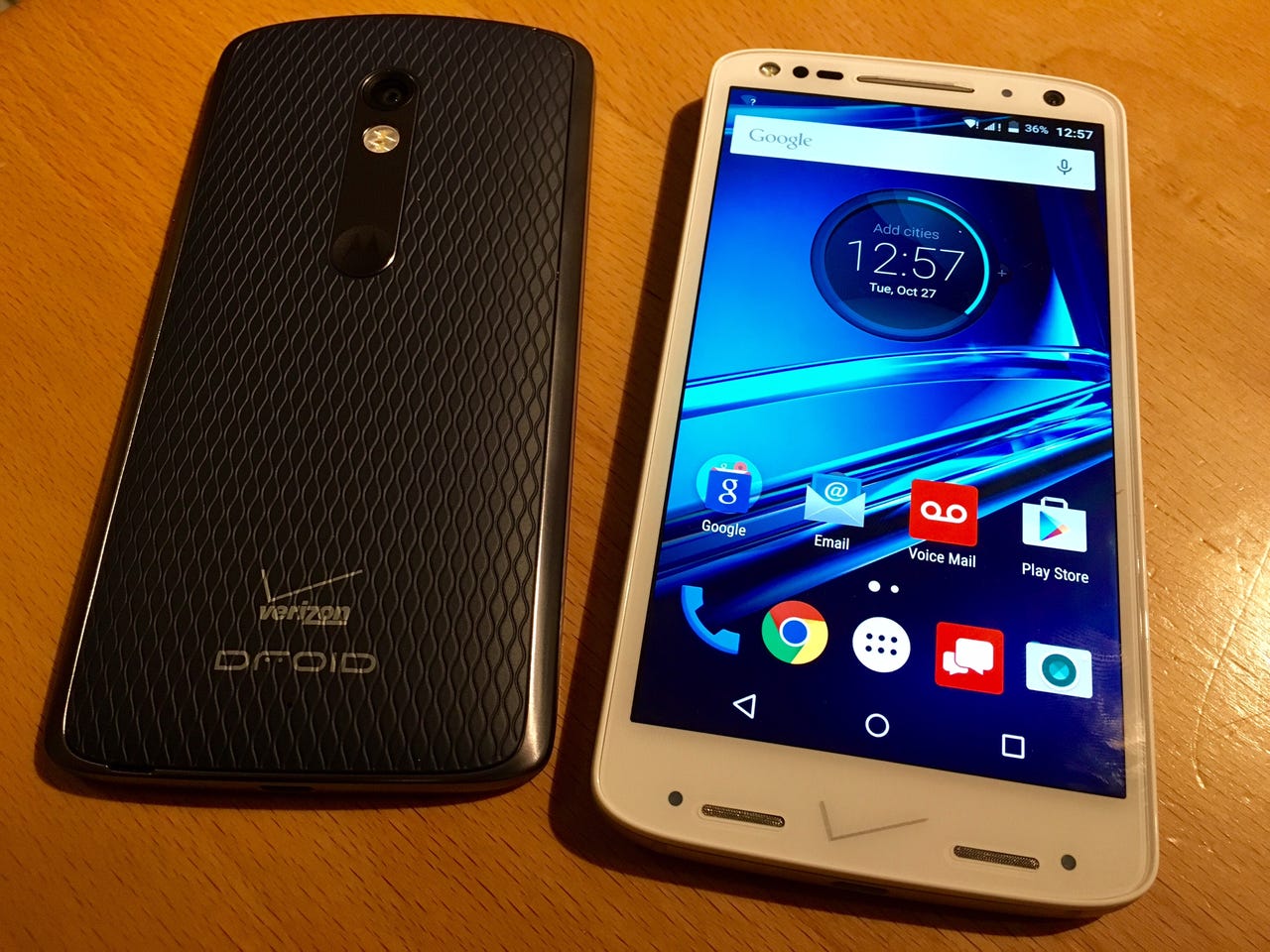Hands on first impressions: Verizon Droid Turbo 2 and Droid Maxx 2


As expected, Verizon introduced a pair of new Droid handsets on Tuesday at a New York City press event. Say hello to the Droid Turbo 2 and Droid Maxx 2; both of which are available this Thursday.
Verizon prefaced the short event by saying "Everything you know about smartphones is about to change." Given that these handsets are both successors to prior Motorola-built phones for Verizon, I'm not so sure about that. However, there are some compelling features in both.
Featured
Let's start with the Maxx 2, which will cost $16 per month for two years; Verizon says the retail price of both handsets is simply 24 times the monthly cost. That works out to $384 if you simply want to buy it outright. That's a relatively low price but the specifications reflect that cost.
The 5.5-inch display is generously sized and uses a 1080p display. Inside is a Qualcomm Snapdragon 617 processor, so I'll have to see how well the phone performs. The back looks like the Moto X Pure Edition with the Motorola dimple, camera flash and 21 megapixel camera sensor.
There's a hefty 3,630 mAh battery inside the Maxx 2, which causes the phone to be fairly rounded. I don't mind that though; it feels nice to hold. The handset supports Qualcomm's Quick Charge 2.0 tech so you can get an 8 hour power boost in as little as 15 minutes with the included 15 Watt charger.
It doesn't look like an inexpensive phone thanks to the metal border between the display and the back. You can customize the back of the device with various shells and flip cases.
Motorola designed a slick tray that holds both a nano SIM card and a microSD card; it's the same one on the Moto Pure Edition from the looks of it. That's handy because this handset comes with 16 GB of storage.
CNET: Motorola's 'shatterproof' Droid Turbo 2 coming to Verizon (hands-on)
The new Moto Droid Turbo 2 looks similar although it's slightly wider and a smidge taller. The big deal here is the Moto Shatter Screen technology comprised of five layers; Verizon repeatedly dropped Turbo 2 phones from about four feet high and no screens were harmed. The Turbo 2 isn't shockproof, however, so I wouldn't advise throwing one around.
Two other things I noticed immediately: You can see what looks to be a screen protector applied to the phone and due to the multi-layer display, what you see on the screen doesn't appear as close to the glass layer as on other phones.
This is clearly the higher-end model with a price to match: It starts at $20 a month for the 32 GB model; more if you want 64 GB of internal storage. Turbo 2 also has a microSD card slot and the 5.4-inch display uses an AMOLED panel with 1440 x 2560 resolution.
Motorola chose Qualcomm's Snapdragon 810 chip, paired with 3 GB of memory, for the Turbo 2. It shares the same 48 hour run-time as the Maxx 2 but charges even faster; there's a 25 Watt charger included with the handset.
Another similarity is the 21 megapixel rear image sensor. So too is the bloatware: Both handsets have more than two app screens filled with third-party apps and Verizon utilities. When I review the phones, I'll see which can removed or hidden.
The Turbo 2 feels a little heavier and sturdier in my hand compared to the Maxx 2. That's likely due to the five-layer display and the new metal frame Motorola designed. But both feel comfortable and have that easily recognizable Motorola design.
Indeed, so far, I'm not sure Verizon changed the way we think about a smartphone. Instead -- at least for now -- I see a pair of Android 5.1.1 handsets that are customized versions of Moto handsets that work on other carriers. These tweaks are welcome, of course, but we're not talking about a radical smartphone revolution with either device.
More to follow as we put these handsets through their paces; don't hesitate to ask any questions in the comments so that we can answer them.